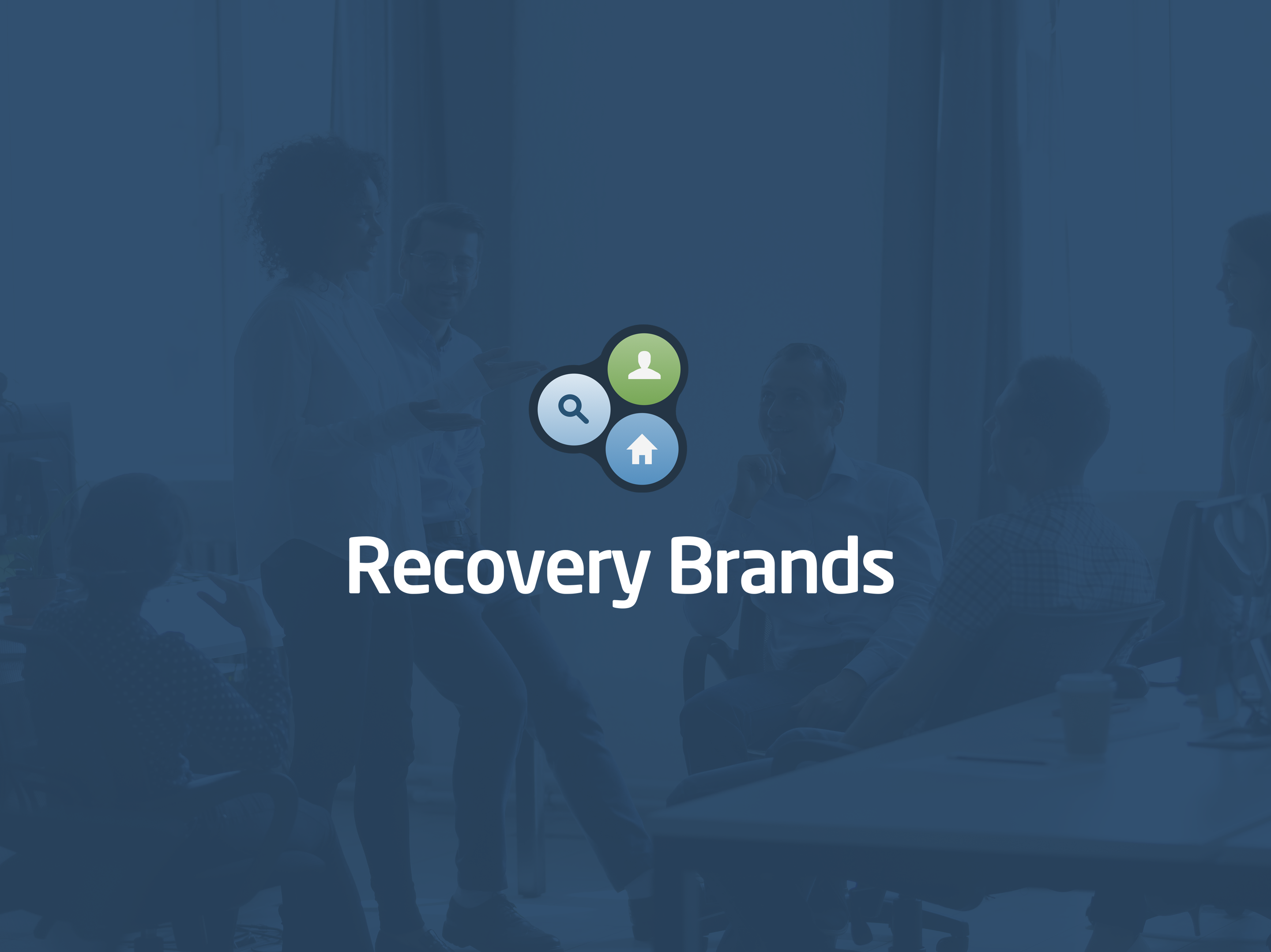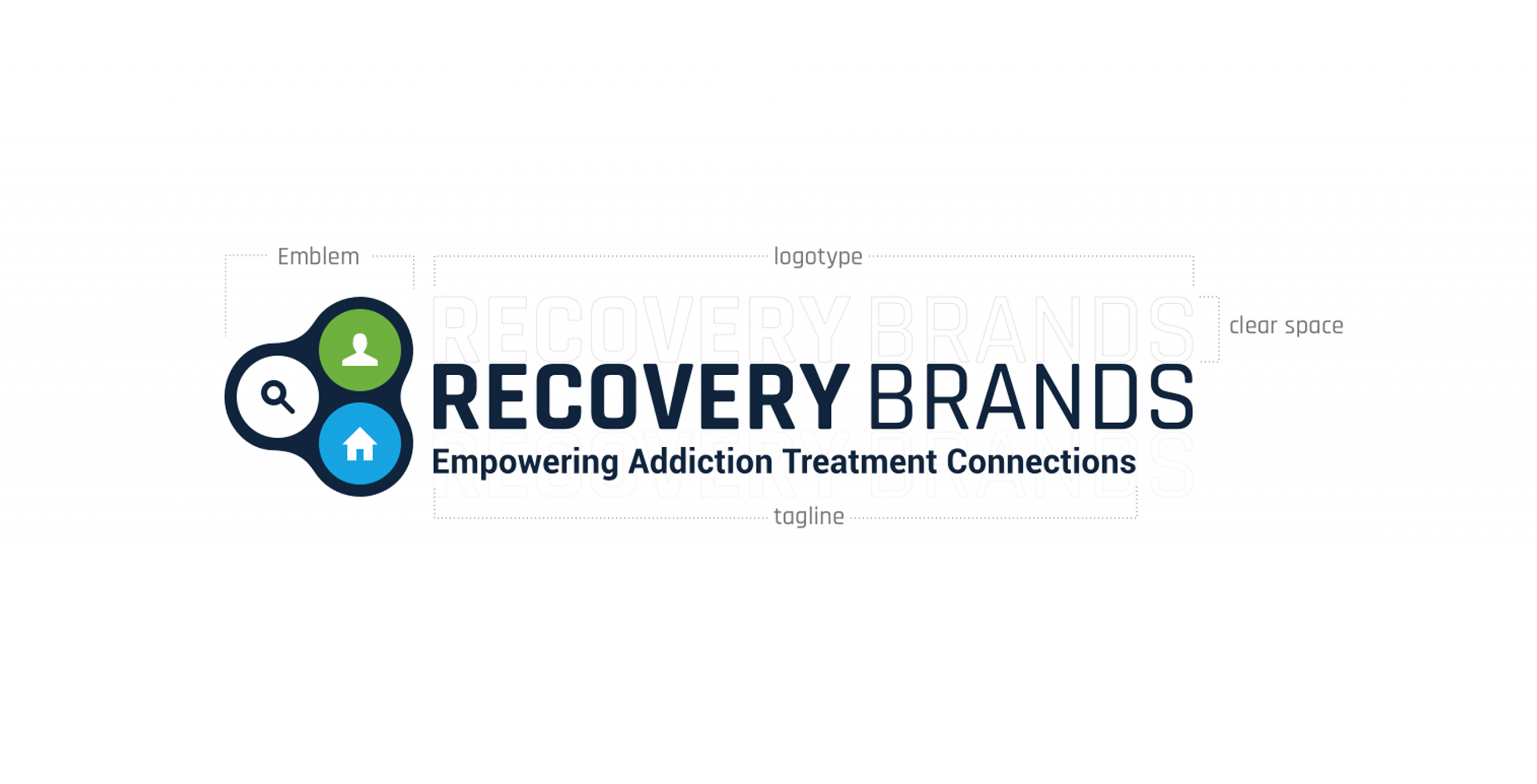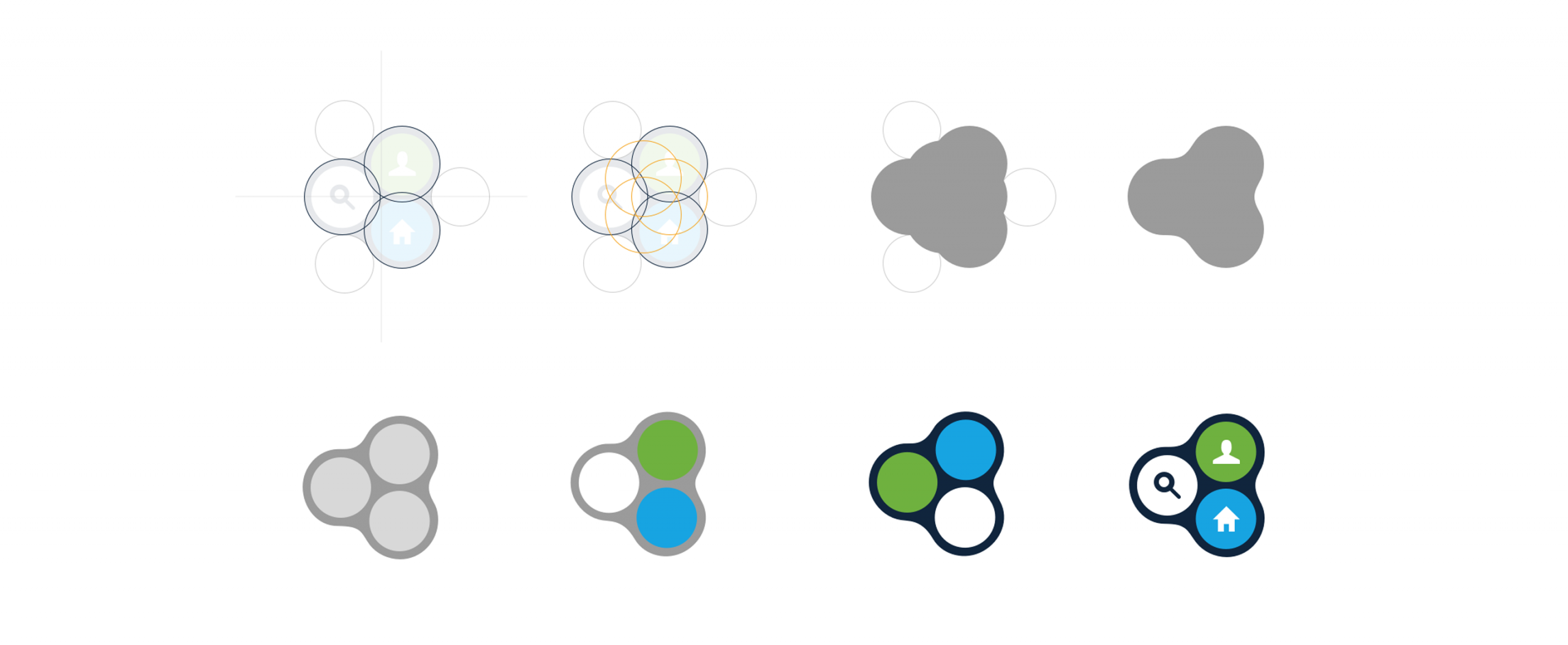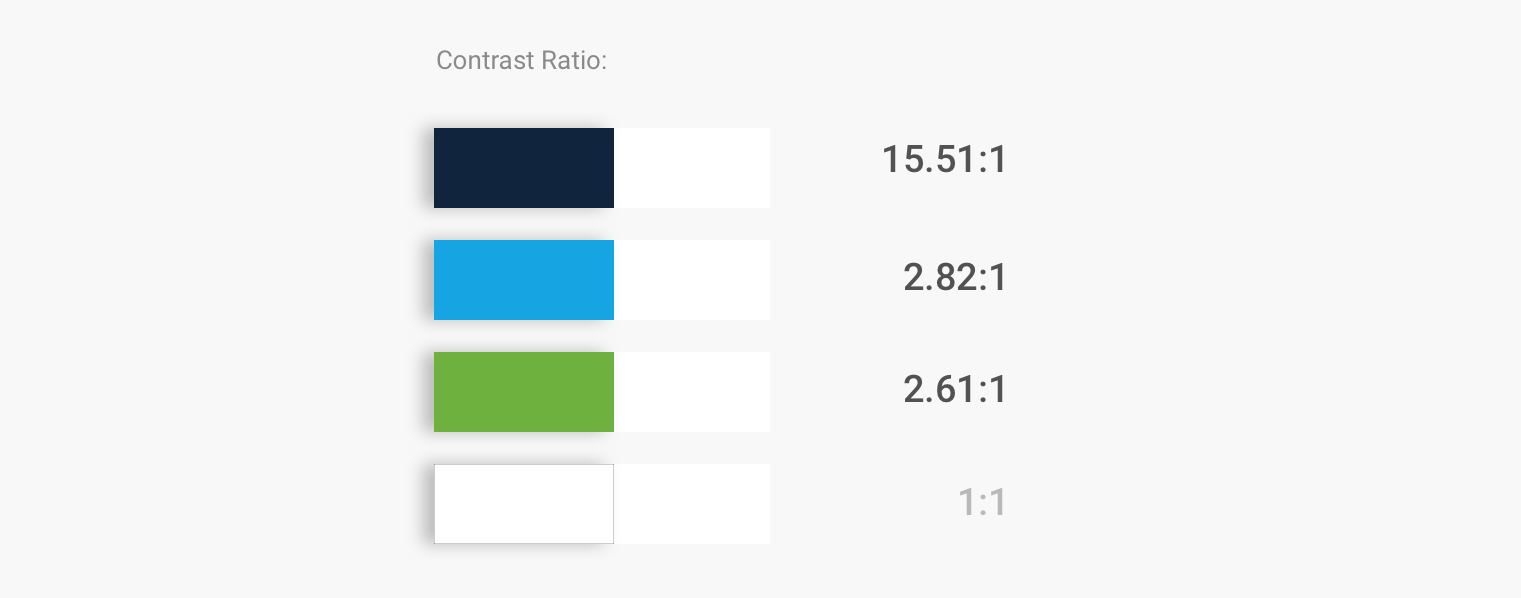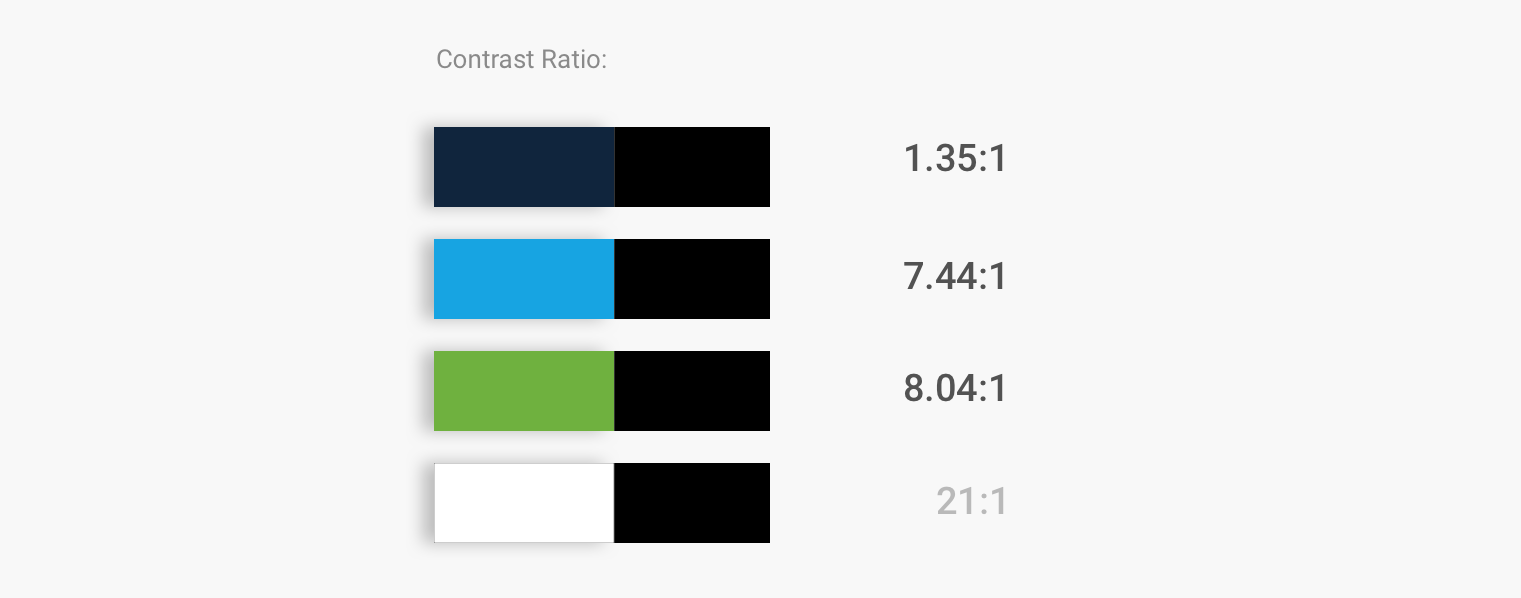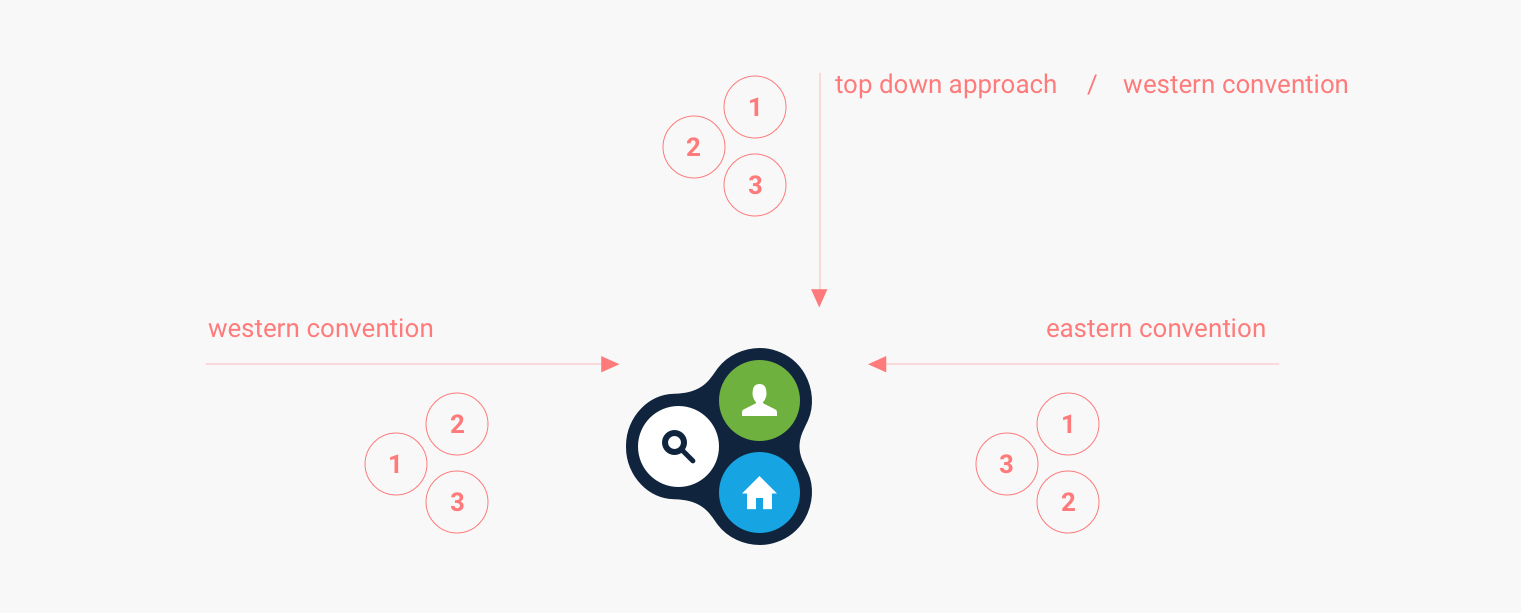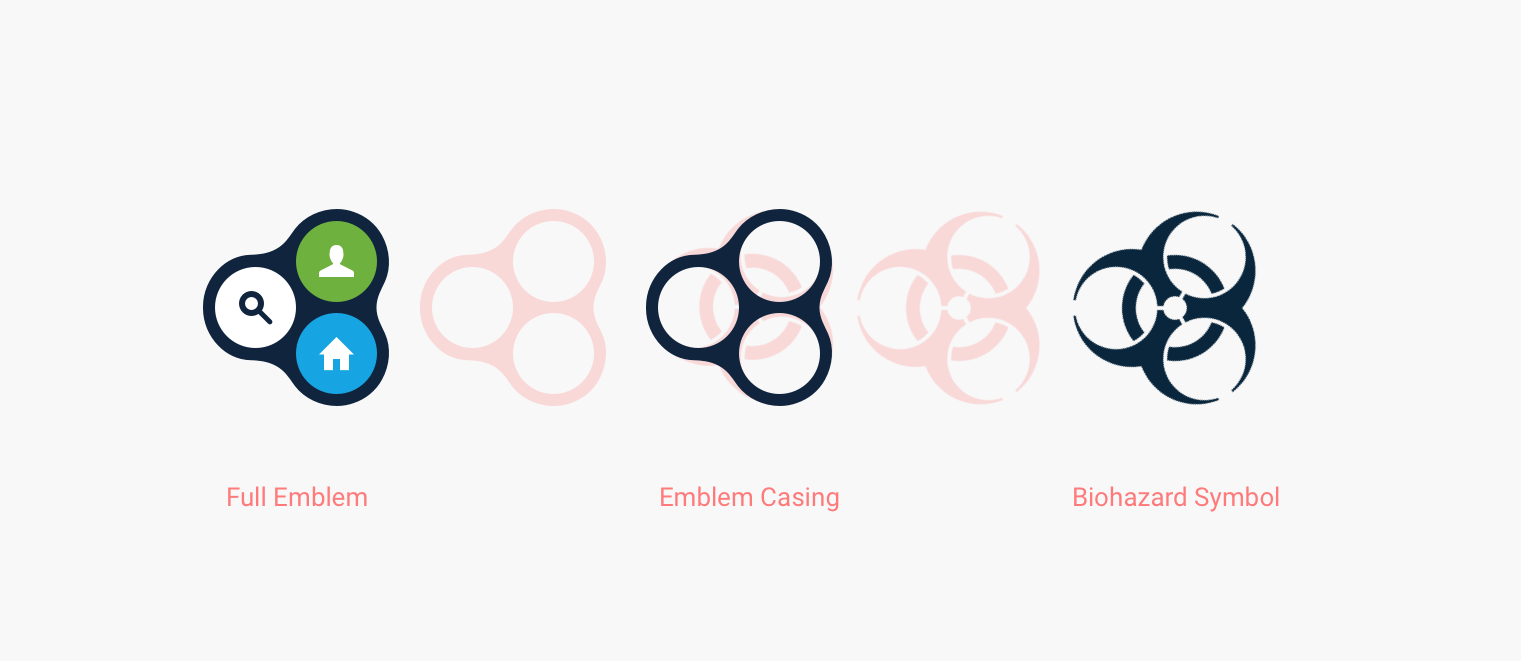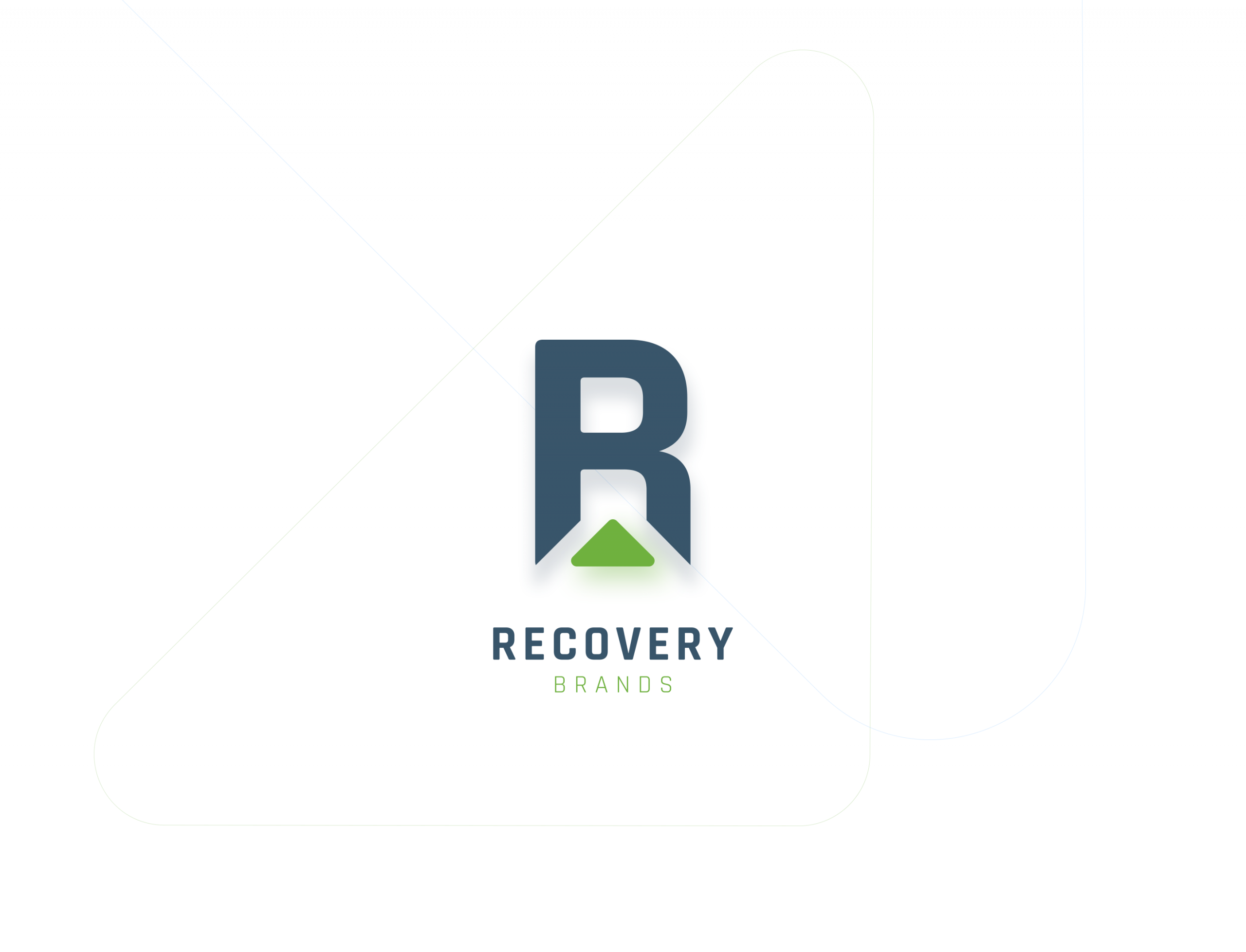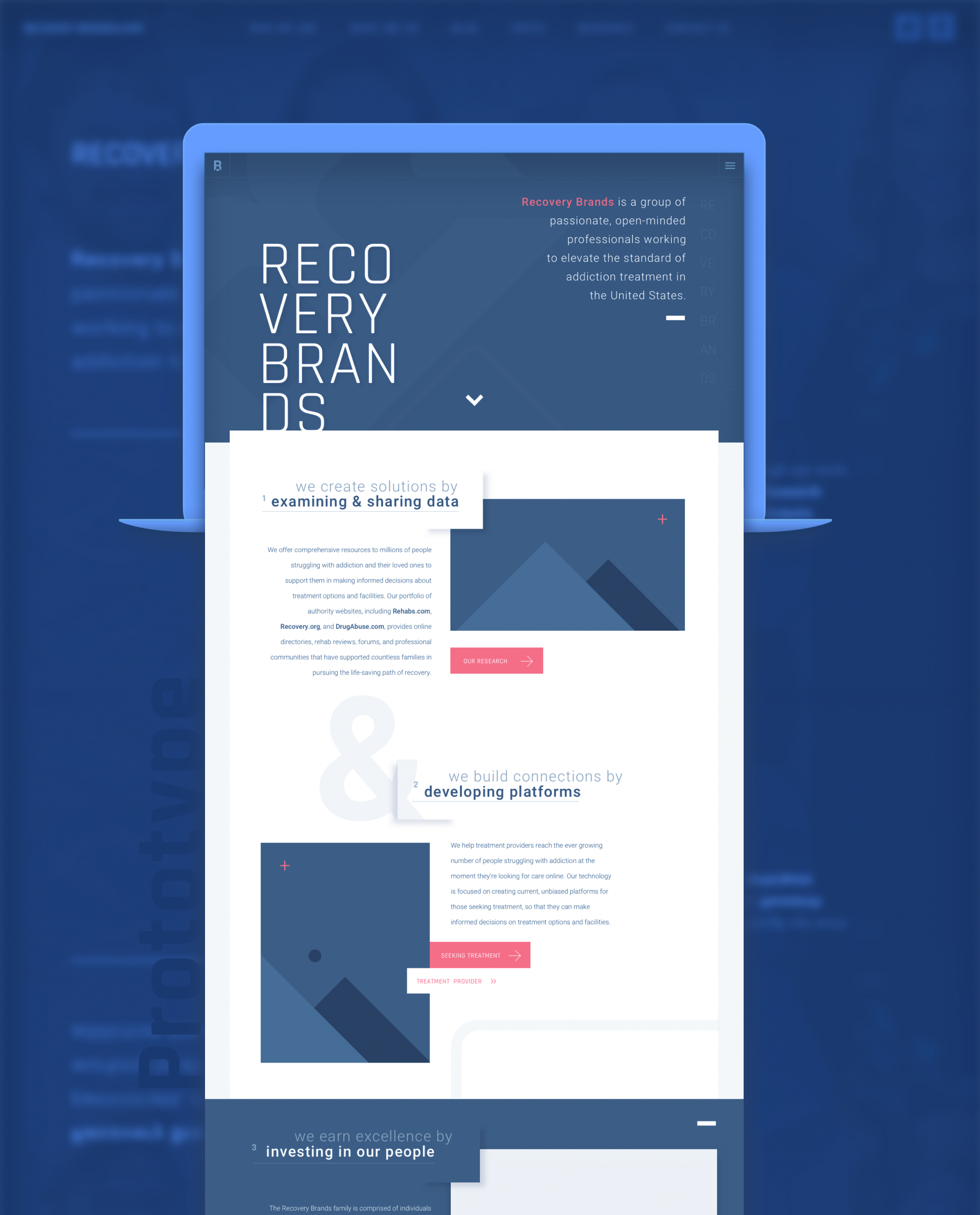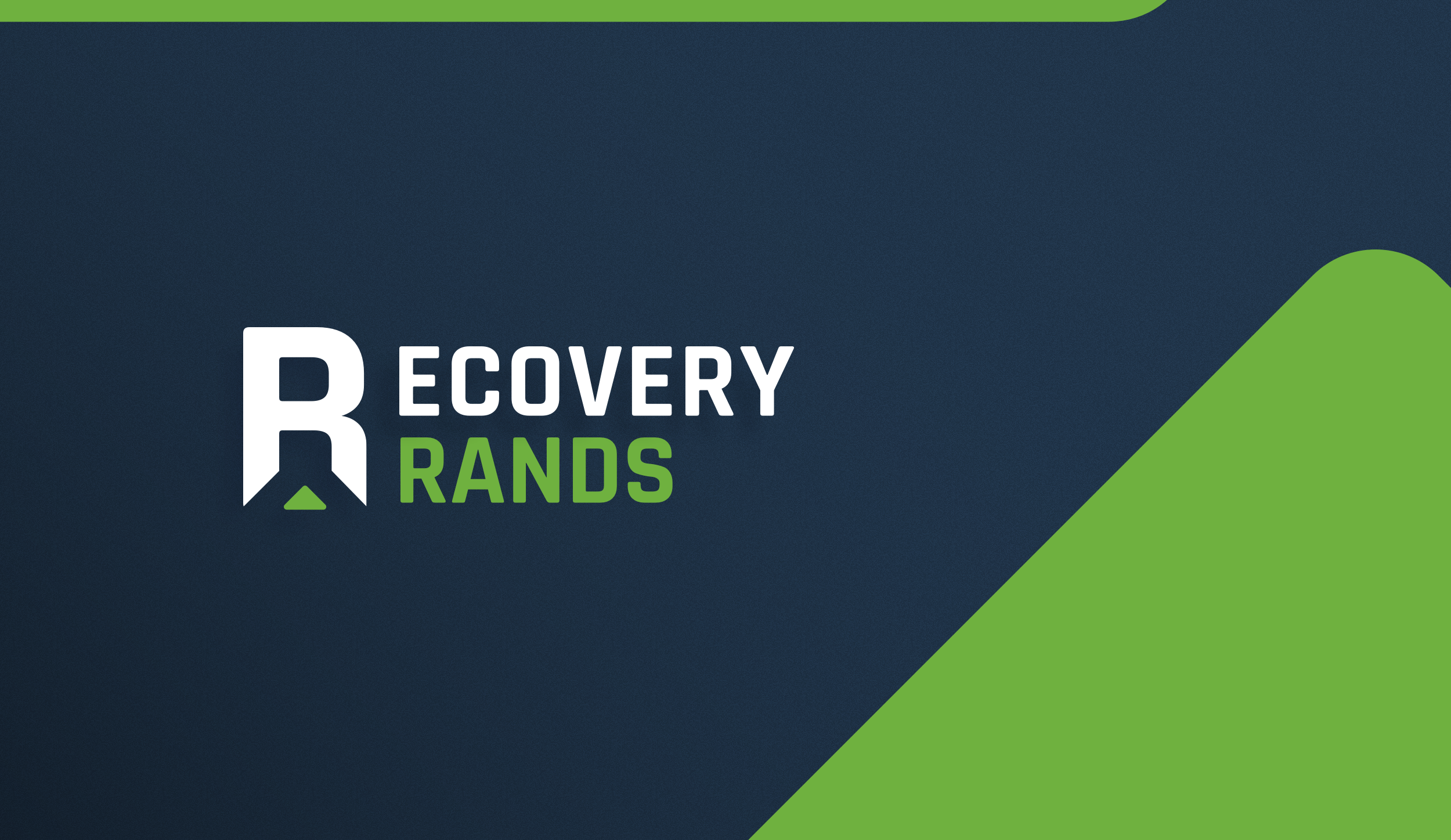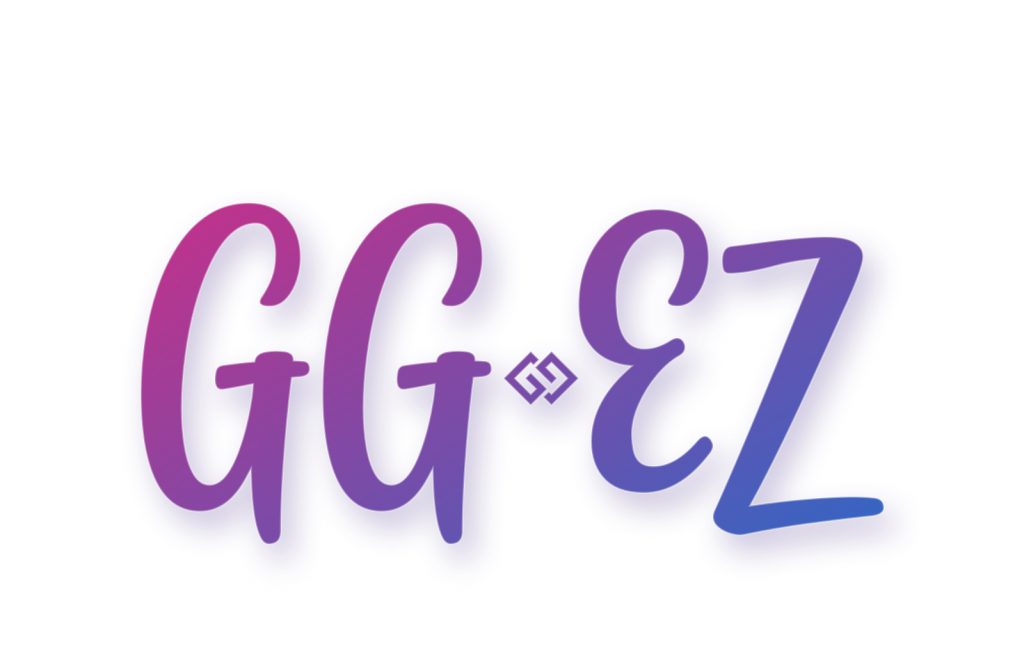When I joined the Recovery Brands team, we were growing at an exponential rate and the sky appeared to be the limit. Our portfolio of websites and apps steadily ticked over 4 million unique visitors a month and continued to grow. This is a great deal of visibility for a company that seemed to have manifested from nothing and had now become a leader.
Since the RB portfolio consisted of dozens of unique and independent brands this presented a unique challenge in terms of design. The new identity would have to be poignant and serviceable as a stand alone brand, while also functioning as the foundation for our individual product brands.


